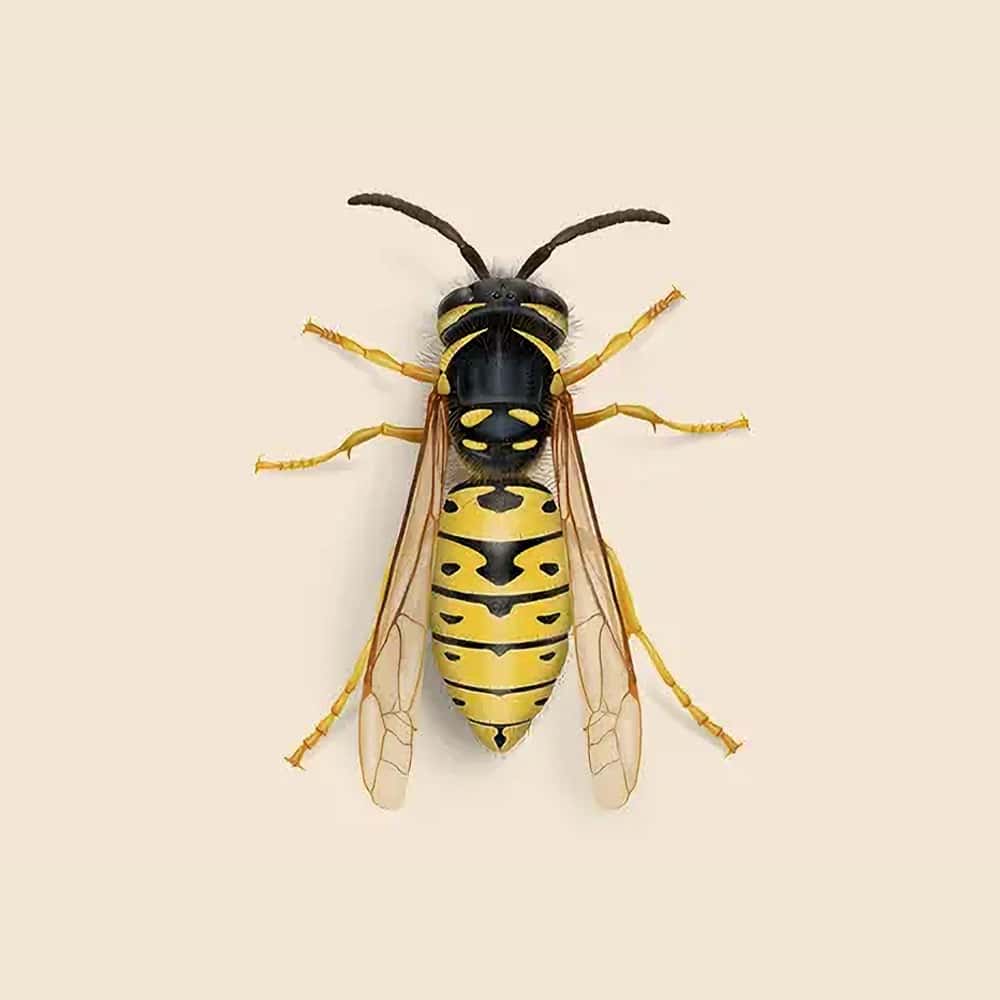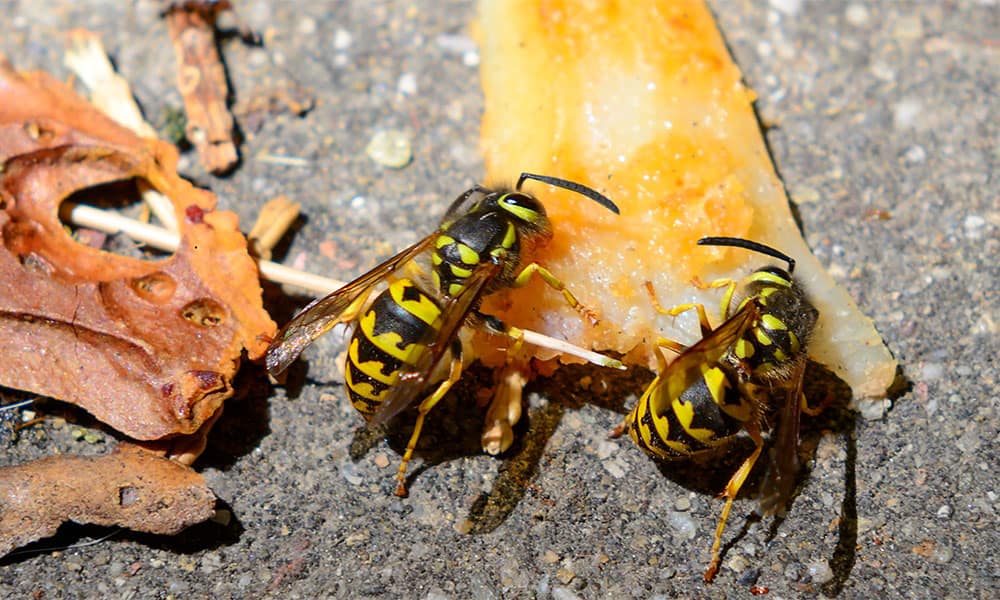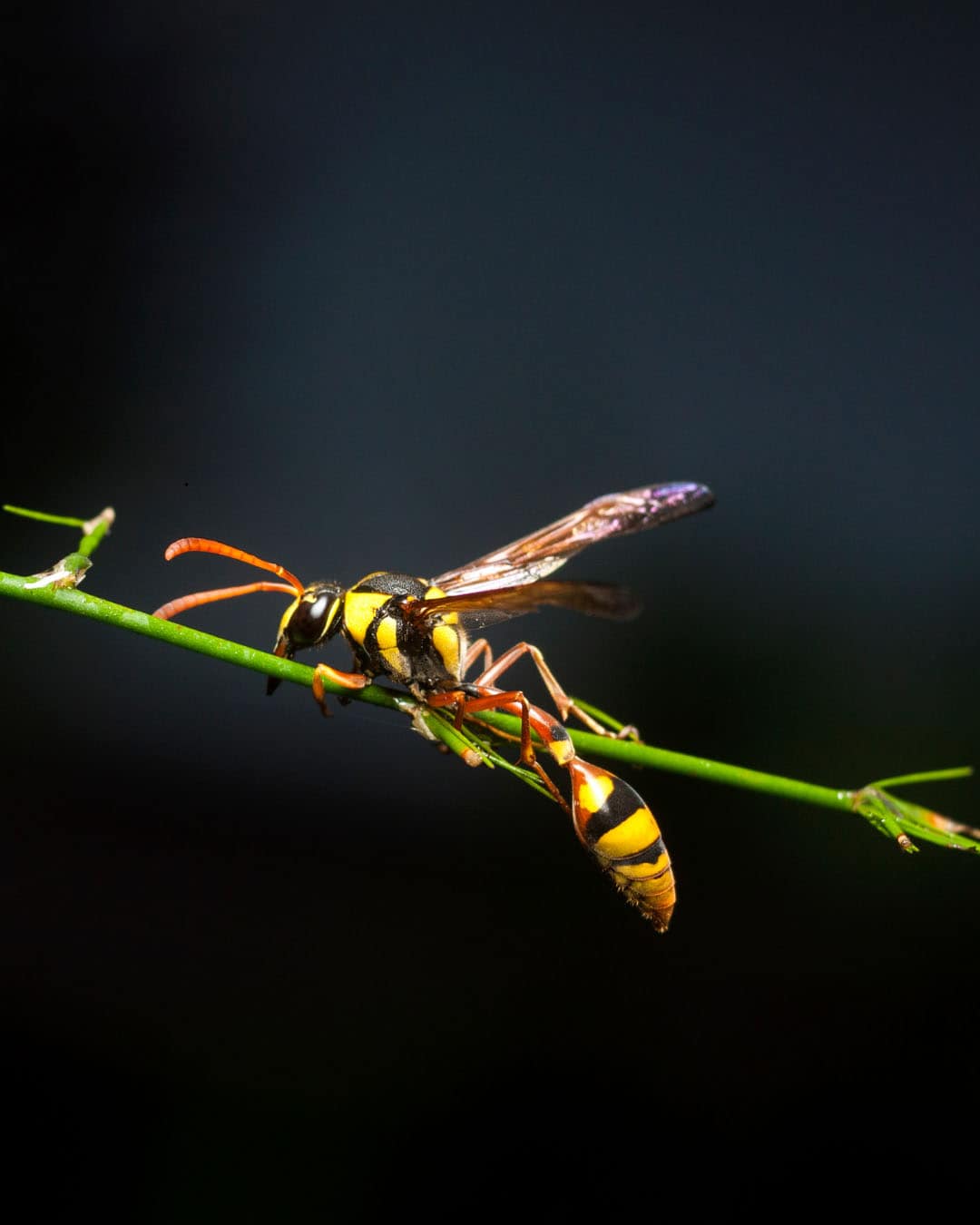Yellowjacket Facts & Information
Yellowjackets are aggressive social wasps known for their distinctive black and yellow coloration and their painful stings. They are notorious for invading picnics and outdoor gatherings in search of food, making them a common nuisance during warmer months. While they can be beneficial by controlling pest populations, their tendency to swarm and defend their nests can pose significant risks to humans and pets.

Vespula Spp. & Dolichovespula Spp
What You Need To Know About Yellowjackets
What do yellowjackets look like?
Yellowjackets are small to medium-sized wasps, usually ranging from 0.5 to 0.75 inches in length. They have a distinctive black-and-yellow striped body that gives them a striking appearance. Their smooth, slender bodies are equipped with narrow waists and long legs, making them agile flyers.
What do yellowjackets eat?
Yellowjackets are omnivorous and have a diverse diet. They primarily feed on sugary substances such as nectar, fruit juices, and human food, especially during late summer and early fall. They are also scavengers and play a role in pest control by preying on other insects, including flies and caterpillars.
What sort of habitat do yellowjackets live in?
Yellowjackets typically build their nests in sheltered locations such as underground burrows, wall voids, and tree cavities. Their nests are made from a papery substance created by chewing wood fibers mixed with saliva, resulting in a rounded, often hidden structure that can house thousands of individuals.
How do yellowjackets commonly behave?
Yellowjackets are social insects that live in colonies, which can number in the thousands. They are known for their aggressive behavior, especially when their nests are disturbed. Unlike some other wasps, yellowjackets can sting multiple times, and they are often drawn to human food, making them a common nuisance at picnics and outdoor events.
Did you know this about yellowjackets?
Yellowjackets are important for the ecosystem, as they help control pest populations and are effective pollinators. Interestingly, their aggressive nature is often misunderstood; they are more likely to sting when defending their nest or when attracted to food sources. Despite their reputation, yellowjackets can be fascinating to observe, especially their complex social structures and hunting behaviors.
Understanding Yellowjacket Infestations
Understanding yellowjacket infestations is vital for effective management. These wasps are typically about half an inch to three-quarters of an inch long and can be easily recognized by their bright coloration and slender bodies. Yellowjackets build nests in various locations, including underground, in wall cavities, and hanging from eaves. Their nests can grow rapidly, containing anywhere from a few hundred to several thousand individuals, particularly during late summer and early fall when the population peaks.

How Hearts Handles Yellowjacket Treatment
Hearts Pest Management employs an integrated pest management approach to handle Yellowjacket infestations.
Yellowjacket Inspection
Yellowjacket Treatment
Yellowjacket Prevention
Educational Resources

Think You Might Have a Yellowjacket Infestation?
At Hearts Pest Control, we understand the challenges associated with Yellowjacket infestations and are here to provide professional solutions tailored to your needs. Flourishing in warm and humid climates, they are prevalent in many regions, including San Diego County, Orange County, and Los Angeles County.